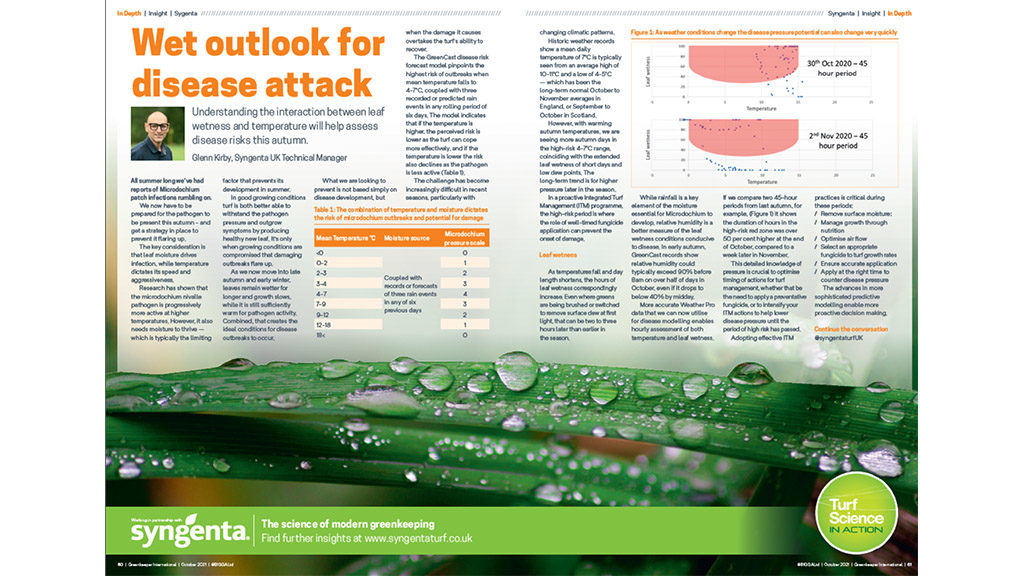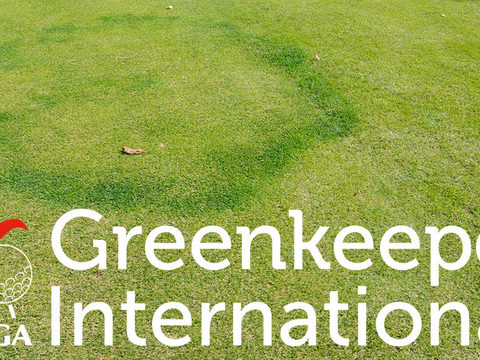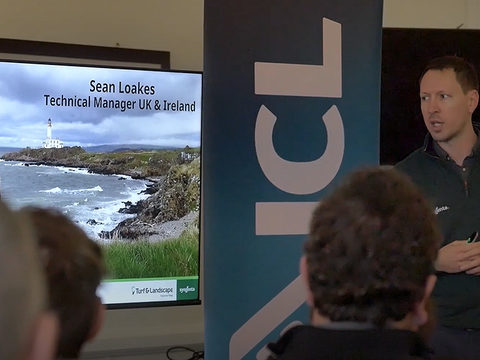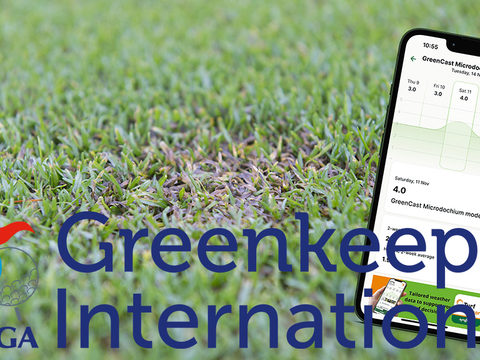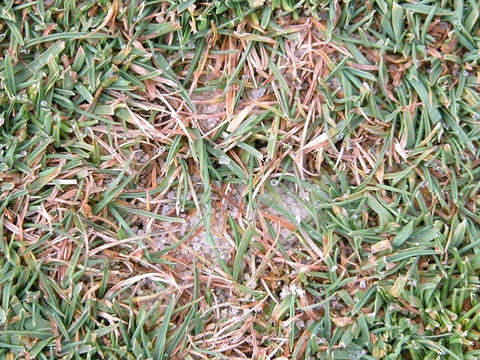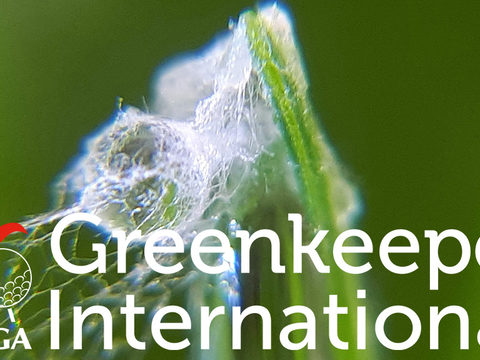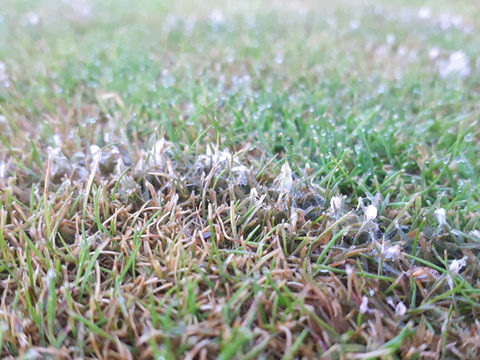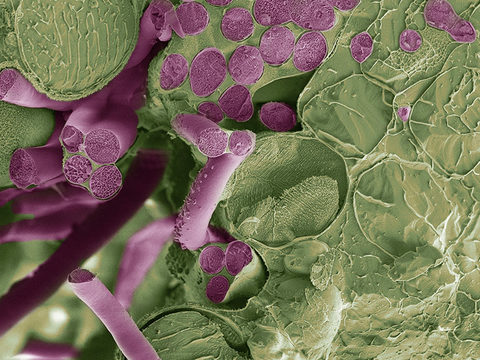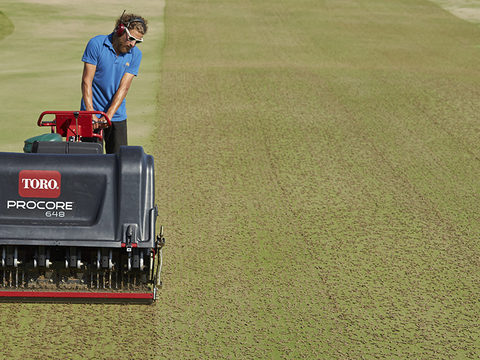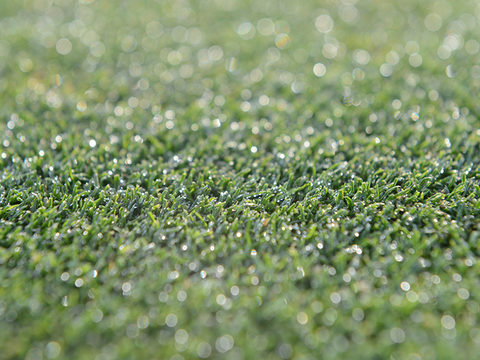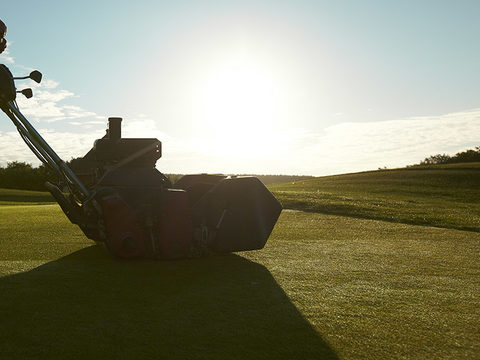Wet outlook for disease attack

All summer long there’s been reports of Microdochium Patch infections rumbling on. We now have to be prepared for the pathogen to be present this autumn - and get a strategy in place to prevent it flaring up.
The key consideration is that leaf moisture drives infection, whilst temperature dictates the speed and aggressiveness when it happens.
Research has shown that the microdochium nivalle pathogen is progressively more active at higher temperatures. However, it also needs moisture to thrive – which is typically the limiting factor that prevents its development in summer conditions. That’s possibly one of the reasons we have seen so many outbreaks over periods of persistently wet conditions this sumer, particularly in the south of England.
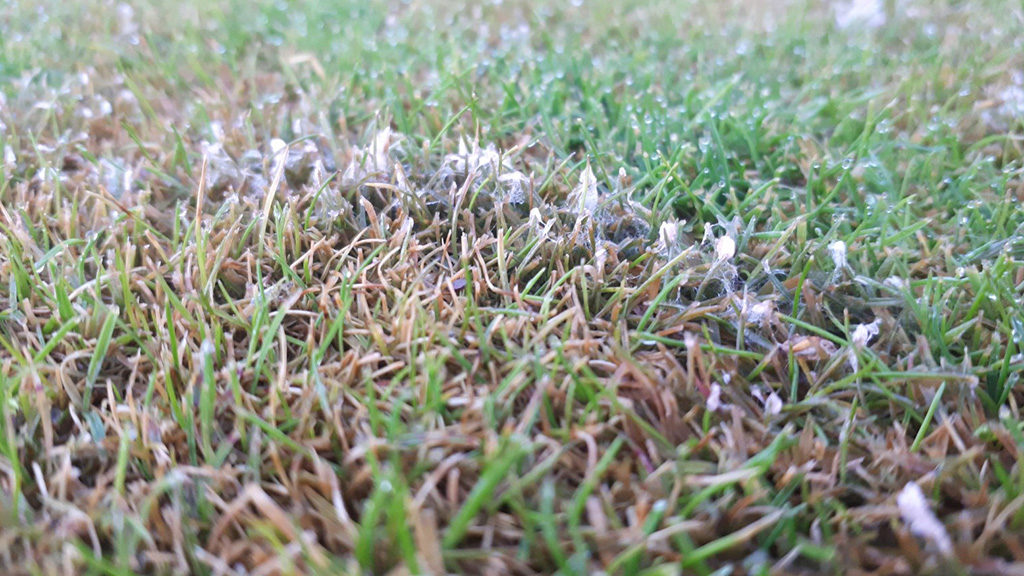
In good growing conditions turf is both better able to withstand the pathogen pressure and outgrow symptoms by producing healthy new leaf. It’s only when growing conditions are compromised that damaging outbreaks flare up.
As we now move into late autumn and early winter, leaves remain wetter for longer and growth slows, while it is still sufficiently warm for pathogen activity. Combined, that creates the ideal conditions for disease outbreaks to occur.
What we are looking to prevent is not based simply on disease development, but when the damage it causes overtakes the turf’s ability to recover. It’s all the more important for the late autumn timing, when any damage can take months to recover in the slow growing conditions – with a corresponding decline in surface quality throughout the winter.
Infection risk
The GreenCast disease risk forecast model pinpoints the highest risk of outbreaks when mean temperature falls to 4-7⁰C, coupled with three recorded or predicted rain events in any rolling period of six days. The model indicates that if the temperature is higher, the perceived risk is lower as the turf can cope more effectively, and if the temperature is lower the risk also declines as the pathogen is less active (below).
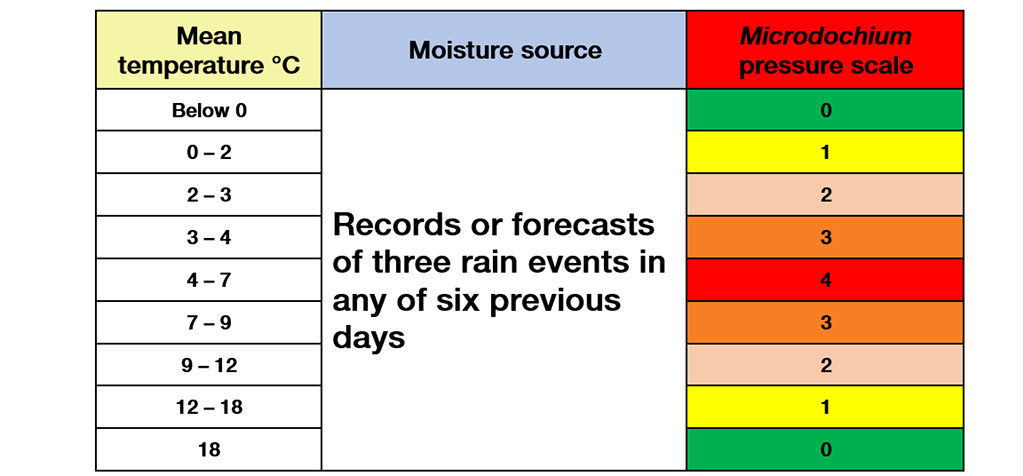
The challenge has become increasingly difficult in recent seasons, particularly with changing climatic patterns.
Historic weather records show mean daily temperature of 7°C is typically seen from an average high of 10-11°C and a low of 4-5°C – which has been the long-term normal October-November averages in England, or Sept-Oct in Scotland.
However, with warming autumn temperatures, we are seeing more autumn days in the high-risk 4-7⁰C range, coinciding with the extended leaf wetness of short days and low dew points. The long-term, trend is for higher pressure later in the season.
In a proactive Integrated Turf Management (ITM) programme, the high-risk period is where the role of well-timed fungicide application can prevent the onset of damage.
Leaf wetness
As temperatures fall and day length shortens, the hours of leaf wetness correspondingly increase. Even where greens are being brushed or switched to remove surface dew at first light, that can be two to three hours later than earlier in the season.
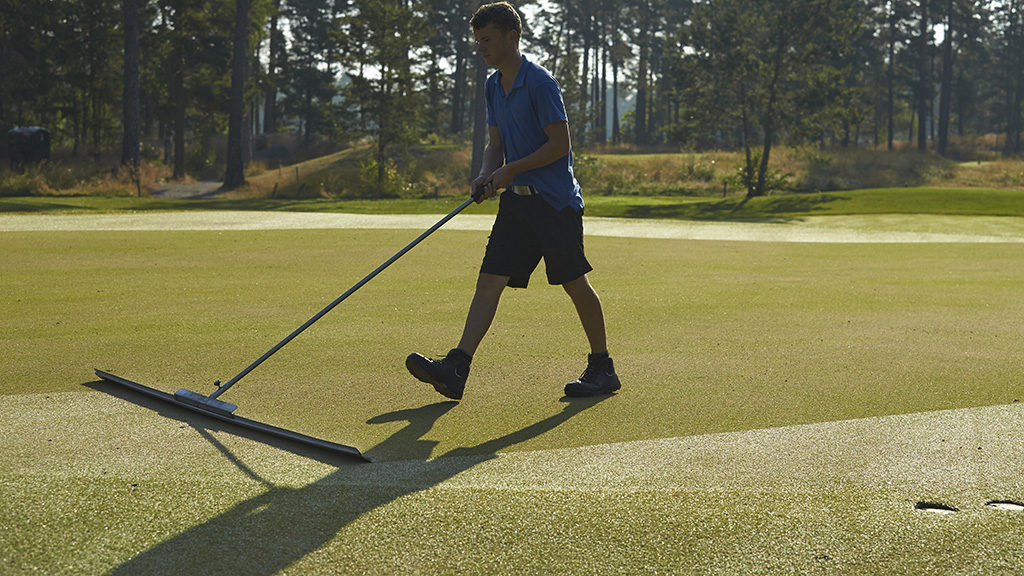
While rainfall is a key element of the moisture essential for Microdochium to develop, relative humidity is a better measure of the leaf wetness conditions conducive to disease. In early autumn, GreenCast records show relative humidity could typically exceed 90% before 8.00am on over half of days in October, even if it drops to below 40% by midday.
More accurate Weather Pro data that we can now utilise for disease modelling enables hourly assessment of both temperature and leaf wetness. If we compare two 45-hour periods from last autumn, for example, (below) it shows the duration of hours in the high-risk red zone was over 50% higher at the end of October, compared to a week later in November.
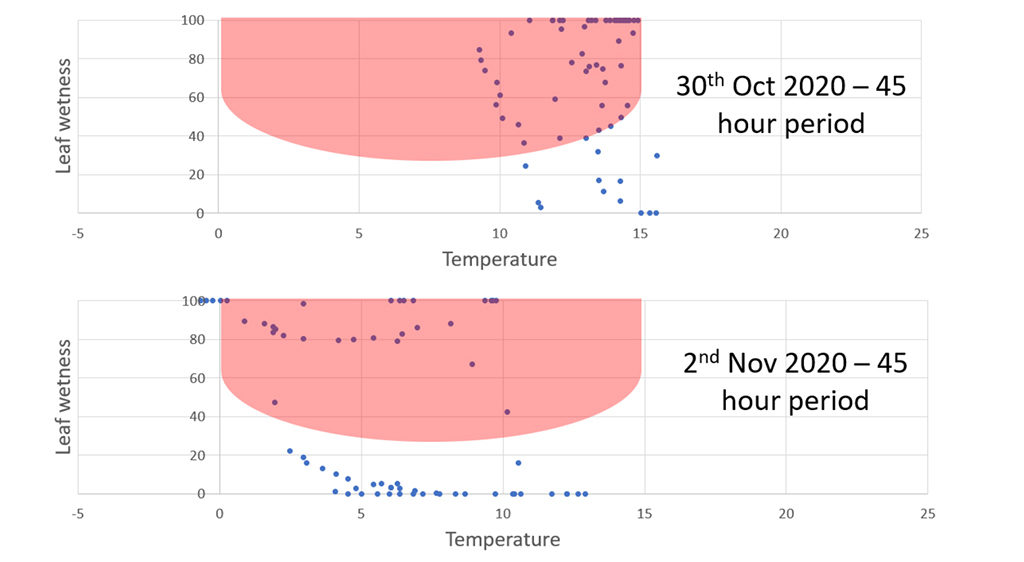
This detailed understanding of pressure is crucial to optimise timing of actions for turf management, whether that be the need to apply a preventative fungicide, or to intensify your ITM actions to help lower disease pressure until the period of high risk has passed.
Adopting effective ITM practices is critical during these periods:
- Remove surface moisture
- Manage growth through nutrition
- Optimise air flow
- Select an appropriate fungicide to turf growth rates
- Ensure accurate application
- Apply at the right time to counter disease pressure
The advances in more sophisticated predictive modelling enable more proactive decision making.
Click here or on the image below to download the Greenkeeper International InSight page:


